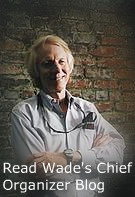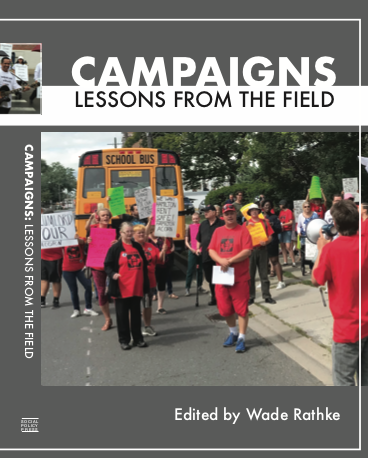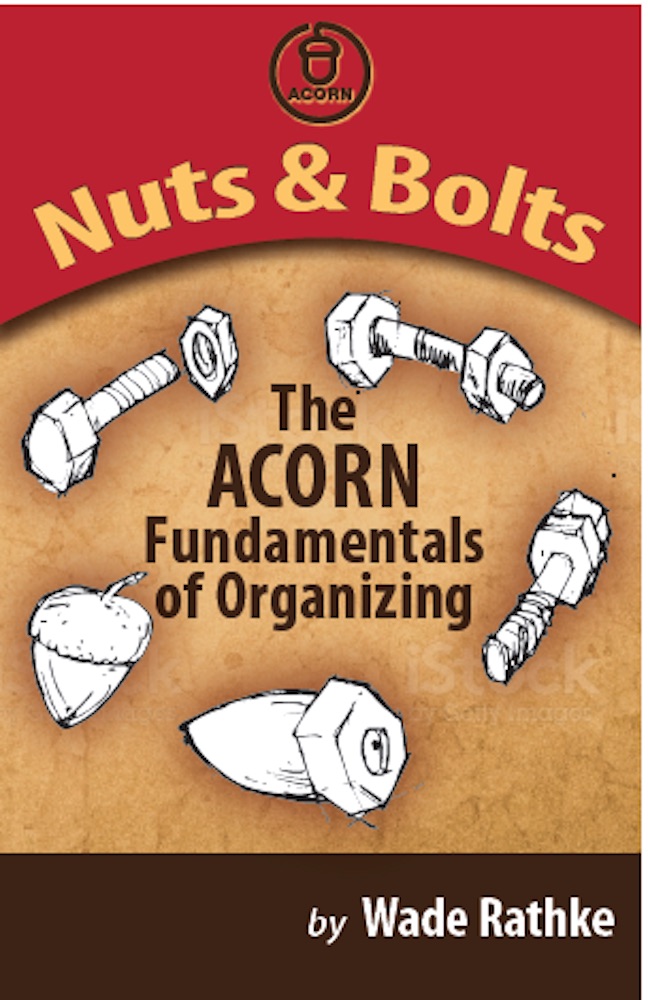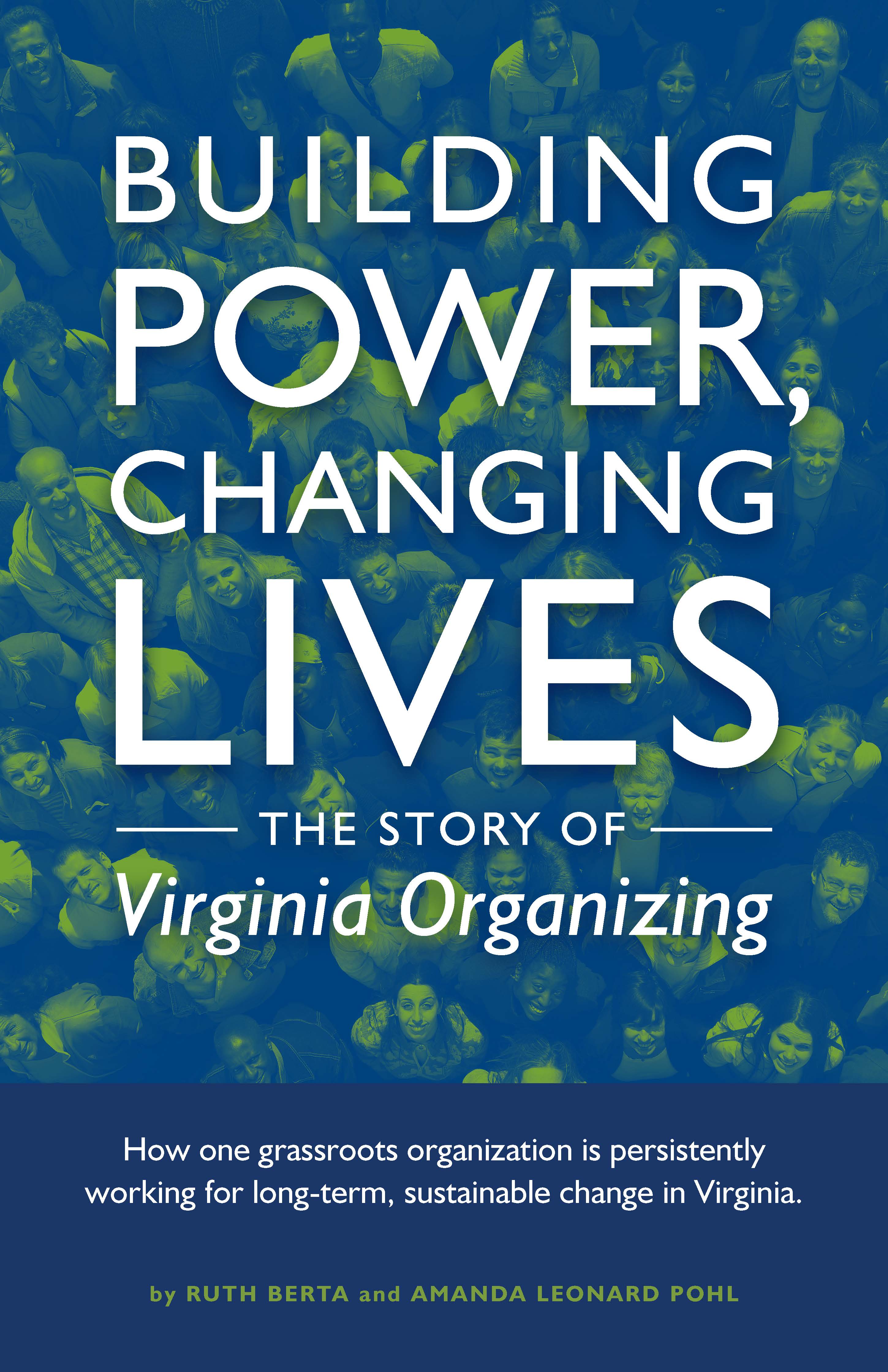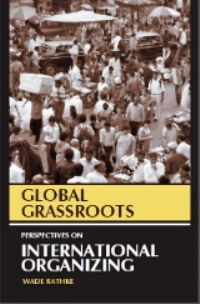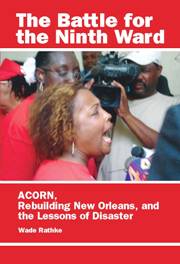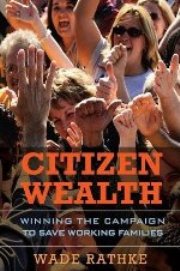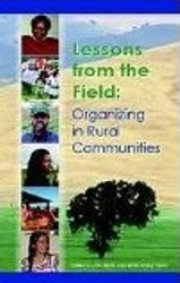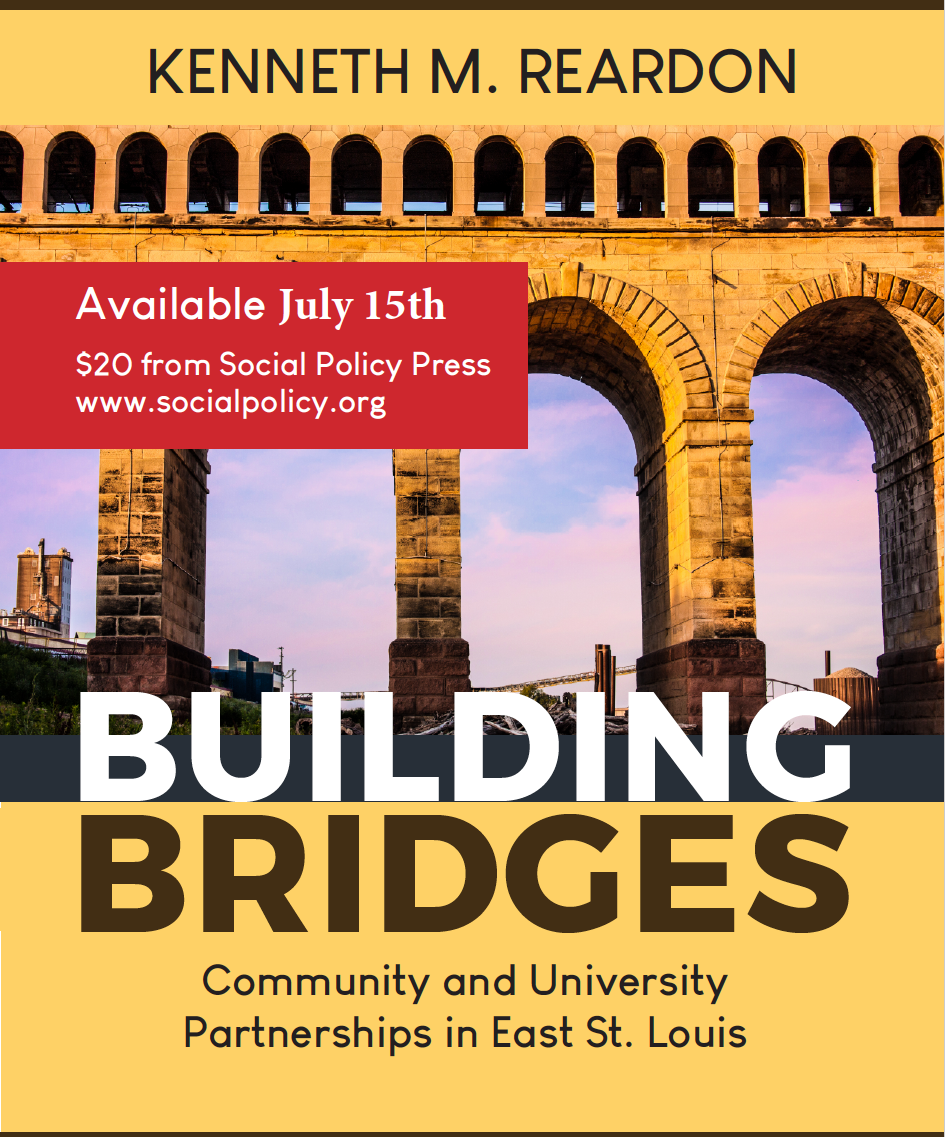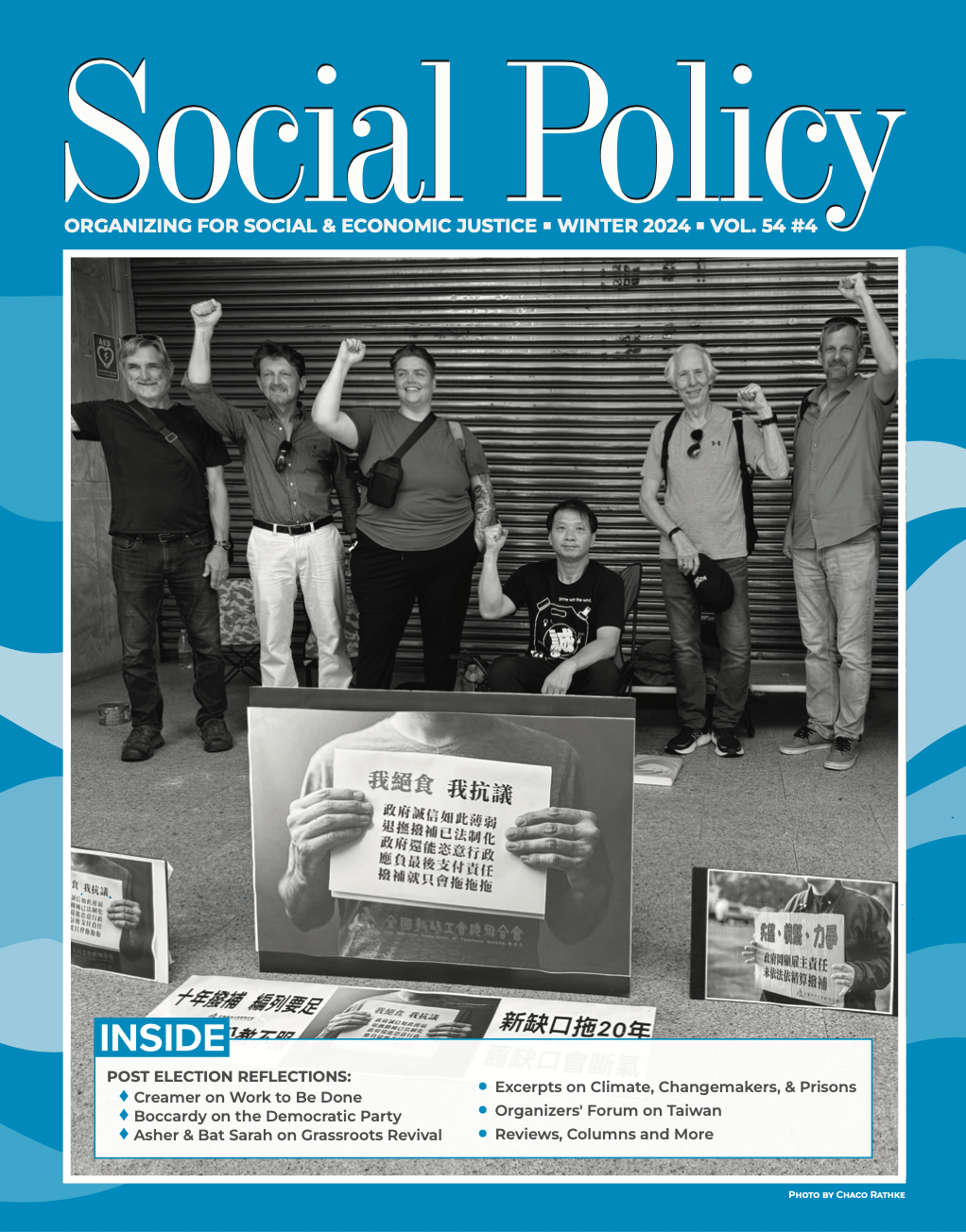Remaking American Democracy III: ‘Keep Your Eye on the Ball’—The Arch-Enemy of Democracy Among Us
Written by Moshe Ben Asher & Khulda Bat Sarah
In the wake of the 2024 national election, post-mortems abound. The explanations are endless. Most contain some combination of facts, reasoning, ideological bias, and partisanship. Some claim to be neutral. But in any case, they’re not what we should be watching.
That the parties differ on issues and on the character of their rivals, is consequential, of course, but also routine. The more things change, the more they stay the same. There is one issue, for example, that has continued to occupy what we’re calling the “dead space” between the two parties. Referring to this political orphan, we could ask: Are Americans able to earn a “living” wage that covers their basic needs or not? Not. Only about half[i] of Americans earn a living wage, since “Wealth inequality has soared, earnings have become less dependable, and most workers report they feel stressed, unappreciated, disconnected, and distrustful of their employers.”[ii] The permanent solution for this longstanding fiasco remains unsolved while the partisan political control of the government bounces between the parties, swaying policy in a more liberal or conservative direction from year to year and decade to decade.
The fact that both parties characterize themselves as having “momentous” potential for change (if they’re in power), is accompanied by another shameful continuity. Despite our wealth and global stature, the U.S. has long been plagued by entrenched poverty, food insecurity, a lack of adequate housing, and a class-biased justice system. Neither party, despite extended periods during which they have controlled the Presidency and both houses of Congress, has resolved these issues. Their rare but high-powered initiatives, such as the Republican Party’s post-Civil War, Reconstruction Era Constitutional Amendments and the Democratic Party’s mid-twentieth century War on Poverty, fall far short of their promised outcomes. These failures are often attributed to “a failure of political will.” Sadly, they are predictable.
We could and should ask: Why is it that other democracies in the world are more successful in pursuing their ideals despite the challenges they face? Why is it that those countries, some of which are even more participatory and democratic than our own,[iii] have been able to mitigate the worst aspects of poverty and socio-political inequities? Sweden, Norway, and Denmark, and, to a lesser extent, France and Belgium, have strong traditions of social democracy, and have prioritized humane and equitable outcomes for their peoples. They have ensured more inclusive access to healthcare, education, housing, and worker protections. They demonstrate that government, when committed to serve the commonweal,[iv] can secure agreement from the citizenry that their superior way of life is well worth the higher taxes required to pay for it. If they can do it, why can’t we?
In the U.S., however, partisans rationalize the persistence of poverty. They cite Christian scripture to the effect that “the poor will always be with you,” as if this scourge could not be improved by assisting the poor, not to mention, the injured, those treated unjustly, etc. Such rationalizations are PR lies calculated to divert the media and bamboozle the uninformed.
Perhaps an even greater source of human suffering—given the number of problems it has generated and given the very great number of people affected by those problems—is the increasing distance between the demos[v] (the ordinary people) and their governments: urban and suburban, local, state, and national. This massive bureaucratization of government, at the expense of citizen participation (which began early in the twentieth century) was calculated.
It was the logical and intentional result of government serving reactionary partisan-party ideologies and interests. Citizen participation dilutes partisan power, right and left, so it’s never welcomed by the parties, whatever their rhetoric for public consumption. Moreover, the modus operandi of bureaucratized government since the early 1900s has been more and more about turning away from serving the commonweal, and more and more about turning toward centralization and the advancement of corporate growth and profitability. That profitability has come at great cost to the rest of us.
Today’s big-government functionaries (ostensibly nonpartisan) are, in practice, less accessible, less accountable, and less controllable by the demos than ever before. When out of public view, they show unrestrained favoritism towards major corporations and their wealthy owners. Moreover, partisan malfeasance and nonfeasance in the service of corporate profitability have facilitated the commercialization and monetization of virtually every aspect of American life.
An epidemic of health-destroying hedonism and narcissism has followed, addicting the demos to mountains of material goods and excessive sexual preoccupation. These are followed by other plagues—dehumanization through technology, irremediable environmental plundering, and high-level corporate criminality, to mention a few. Such moral obfuscation should not be surprising to us in an age of mass neurosis and with a population expecting fulfillment to come (mostly) through material and sensual means. In the end, we discover we have traded our identity as citizens responsible for the commonweal, for our role as consumers—bread and circuses. In the end we, the demos, are left politically immobilized and morally complicit.
It’s clear that social morality[vi] and democracy are existentially coupled—historically, each begins to fail without the other—and the failure of either marks the beginning of the end of commitment to commonweal. Should we doubt it, we must ask: What happens when there are few or none to act for the common good? The simple answer is that evil goes unchallenged. As always: All that is required for evil to prevail, is for good people to do nothing. Perhaps we don’t often think of ourselves as conquering evil. But, if not us, then who?
It is always possible that morality or the idea of acting for the common good was “missing in action” even before the opportunity to act on it arose. In a world where public education and others have forsworn the teaching of civics, social deportment, and moral values, that is more than a possibility. In that case, the social and moral decay may be seen not only as the result of our not acting for the common good, but also as the cause of our not acting for the good. In the words of Rabbi Abraham Joshua Heschel, “few are guilty, all are responsible.”[vii] As humankind, we have to be socialized and educated up to our capacity to bring ourselves and the world to their fullest moral expression. The best of life for the most people—the commonweal—comes when we live righteously, truthfully, justly, freely, peacefully, and compassionately, and those things have to be taught. In the absence of such socialization and education, we may logically expect a decline of moral spirituality in family and community life, and a consequent rise of a narcissistic culture in its stead.
Further, the abandonment of our moral free will—the power we have as humankind to choose good over evil, justice over injustice, and compassion over cruelty, both in our personal and public lives—leads to the loss of freedom (our own and that of others). In its absence, we may find our food supply, our natural environment, our educational institutions, and our peace of mind degraded, our rights and privileges canceled. In our own time, the moral corruption of the unscrupulous has penetrated deeply across the landscape of American institutions, perverting their leadership and culture. The partisan parties have led us to this fabulously profitable state of affairs, benchmarked by the Dow breaking 44,000.
We are left with questions for which there are no easy answers: Why have we not been able to rise above this moral quagmire? Why haven’t we restored participatory democracy to its rightful place? Why haven’t we, the demos, claimed our sovereign power to insist on the commonweal as the primary, if not the only, legitimate purpose of our governments?
One argument we have heard repeatedly is that America’s failure to permanently resolve punishing conditions is due to nothing more sinister than inter-party competition, the understandable tension between liberals and conservatives. The problem with that perspective is that both parties depend on billionaire dollars and goodwill to win elections. Both of them serve the interests of their wealthy contributors by not supporting tax-expropriation that would disempower the billionaires. Neither of them proposes reforms to substantially increase participation of all the lesser classes in government decision-making. And neither of them seriously fights against privatization of essential public services, such as schools and utilities. There may be debate among party factions and advocacy groups. But the reforms that get adopted by either one of these parties are (mostly) moderate ones that align with the interests of wealthy donors, rather than transformative ones that would disempower them.
Others argue that America is a frontier nation; that, as such, it abhors dependency and expects that every person’s destiny is what they make of it, without government “meddling.” This explanation fails to provide convincing on-the-ground evidence and ignores that the rigid standard of self-help frequently gets bent for powerful corporations and wealthy individuals, who receive large government supports and subsidies.
The latter arguments are rationalizations. They serve as distractions from the effects of behavioral or institutional history—that is, how the behavior of groups of people, particularly those with significant power who act covertly, bring about strategically calculated outcomes for the individuals and groups they target. When we consider the nation’s institutional history, we get very different answers to our questions.
This was impressed on me (Moshe) when I was a young, newly promoted project director in a public administration consulting firm, about to lead a new project. The company president said to me: “Keep your eye on the ball!” But I didn’t have a clue what he meant by “the ball.” He then explained to me that the employees of our government client would do everything they could to keep outsiders from knowing how things actually worked. Insiders’ knowledge of the government’s foibles and failures were closely guarded secrets. Outsiders would be fed PR pablum. I was to penetrate the secretive culture, the president explained, and thereafter keep my eye on the ball, never allowing myself to be distracted by the PR spin.
THE ELITE IN AMERICA
The answers to our earlier questions are revealed when we sidestep the governments’ PR spin and keep our eyes on who’s controlling the ball from one decade or century to the next. We’re focusing on the country’s elite, which has not only controlled the ball, but has commandeered the ideological meanings and rules of the U.S. political-economy.
We turn now to an abbreviated history of the American elite and its political muscle, the partisan parties. From the early years of the Republic, they have been heavily involved in the political and economic transformations that have shaped the nation.
Those who led the settlement of the New England towns were part of the Puritan constituency. It was they who planted the roots of white Christian nationalism (they were all white men and at least nominally Christian). They imposed their dominance over the land, the indigenous people, the church, and the institutions of governance. These early landowners and merchants (many of them slaveholders) who had been influential in colonial governance, supported, from the outset, policies that favored centralized power and pro-business interests. Later, as the partisan parties developed and the economy grew more complex, the elite diversified, but not in regard to gender, race, religion, or political-economic ideology.
The first partisan political parties emerged in the 1790s led by Alexander Hamilton, Thomas Jefferson, and James Madison. Known as the Federalists and the Democratic-Republicans, they arose mostly in response to ideological differences regarding economic and political development. Hamilton’s plan was considered controversial because it concentrated financial power at the national level and strengthened ties with wealthy elites and financiers. This agenda was strongly opposed by Jefferson and Madison. They believed it threatened state sovereignty and encouraged corruption by consolidating the power of the elites.
Partisan newspapers popularized the ideological differences, openly lining up behind either Federalist or Democratic-Republican positions, spreading partisan rhetoric and mobilizing public opinion. Political clubs and societies began to form, encouraging activism and support for one side or the other. Federalist policies that favored wealthy elites were seen by the Democratic-Republicans as a step backwards to monarchy or oligarchy, while Federalists worried that the Democratic-Republicans’ populist tendencies would lead to mob rule. These fears, combined with rising sectional tensions, led to the solidifying of partisanship.
By the early 1800s, Jacksonian Democracy leaned toward populism, with an emphasis on the “common man.” But Andrew Jackson’s Democratic Party also attracted a new class of wealthy elitists who came from the expanding frontier. Their wealth was derived from commerce, with no connection to the traditional land-owning aristocrats. As midwestern and western settlement and development proceeded, financially high-flying industrialists, real estate speculators, and financiers were attracted. The trend was bolstered by the era’s railroad-building and by the development of railway-adjoined land acquired from the government as investment-risk-incentives. The net effect was to create new, practically unlimited financial opportunities.
By the late nineteenth century, the country was deep into the Industrial Revolution. It transformed the American economy, raising up many more wealthy and politically powerful industrialists. The “robber barons” John D. Rockefeller, Andrew Carnegie, and J.P. Morgan among them, amassed unprecedented wealth through the oil, steel, and banking industries. This signaled the arrival of the “Gilded Age.”
The industry-based wealthy differed significantly from the old agrarian aristocracy, focusing as they did, on corporate control, monopolies, and political influence, particularly in relation to labor issues. Republicans who were dedicated to corporate profitability supported these interests. Democrats, who increasingly championed the working class, did not.
During this period, over-the-top speculation in railroads and industries and the collapse of a major investment bank drove the Panic of 1873. Another Panic in 1893—the result of railroad over-building and a banking crisis—brought about a depression, with high unemployment and widespread poverty. These outcomes were intensified by the transition of American society from rural-agrarian to urban-industrial, which displaced large numbers of farmers and small manufacturers and businesses. The ramping up of immigration, labor competition, and urban poverty led to riots and the great strikes of the rising industrially based labor movement.
The Progressive Era, at the beginning of the twentieth century, was marked by a public outcry against the exploitation of workers, monopolistic practices, and corruption. This divided the elite. Progressives, like Theodore Roosevelt, advocated modest reforms of corporate power, regulatory limitations, and labor rights. Those reforms were tolerated by a small number of wealthy individuals thinking to blunt the threat of socialism. But oligarchic power and the objectives of its wealthiest individuals continued to expand, seemingly uninterrupted. Those with a social conscience, having become marginalized, eliminated themselves from the Progressive movement.
The Great Depression of the 1930s and Roosevelt’s New Deal policies marked a dramatic shift in the character and influence of the would-be oligarchs. New Deal policies empowered labor unions and limited corporate influence. Notable liberals, including intellectuals, progressive politicians, and some business leaders supported expanded government intervention to stabilize the economy and protect workers. Nonetheless, the increasingly oligarchic elite remained powerful. They adapted to the new era by changing their methods. Through lobbying, and the use of the media—the mass-circulation of popular periodicals and radio broadcasting—to reach nearly every home in the nation with their message, they began to shape national political debate and decision-making to favor free-market policies.
Roosevelt’s New Deal centralized much more power in the national government. During the years of World War II, this centralization worked to the advantage of the elite because of the adoption of their free-market policies, which held sway until the emergence in the 1960’s of the counter-culture and political radicalism driven by the Vietnam War.
In the 1980s, Ronald Reagan presided over a renaissance of free-market ideology. He supported tax cuts and financial deregulation, reduced welfare spending, and union-busting. The elite moved strategically to embrace neoliberal policies, such as deregulation, lower taxes on capital, and globalization. This led to hugely disproportionate accumulations of wealth by corporate executives, tech industry magnates, financial sector leaders, and multinational corporations. This upward redistribution of wealth birthed a modern oligarchy, which began to rule across America’s highly diversified and globalized industries, with compelling influence on both parties, effected primarily through campaign financing, lobbying, and media ownership.
Over the course of this history, new industries and economic changes led to shifts in the composition and strategies of the elite. Their core interest, however—in acquiring, preserving, and increasing their wealth and the political influence it afforded them—remained constant. Also, constant (over 150 years) were the economic recessions and depressions driven by their greed. The twenty-first century elite, having transformed itself into a fully functioning oligarchy, diverse in terms of industry and international scope, now extended their extraordinary reach into every American institution.
ELITE POWER WORKING
Many scholars, political theorists, and journalists agree that our political and economic institutions have been “suborned,” by oligarchic influence, often procured by bribery or other corrupt means. It’s highly unlikely, at least in our own era, that these institutions will begin to act independently of that influence, and even less likely that they will serve as a counter-weight to the morally unhinged political power the oligarchs have set loose on the nation. Not only have they entrenched themselves in our political institutions, they have implanted their ideologies and interests so deeply within them, that the prospects for significant self-reform are dim to nonexistent. The only hope of redeeming these institutions is systemic change driven from beyond the corrupting reach of the oligarchs.
That wealthy individuals and corporations now have substantial influence over all three branches of government is evidenced by the size of their donations to political campaigns, by the scale of their professionalized lobbying, and by their success in “opening” the largely unregulated revolving door through which key government officials move into the private-sector and are rewarded with substantial career advancement. Supreme Court decisions such as Citizens United v. FEC (2010) have contributed further to this trend by allowing unrestricted corporate spending in elections, thus increasing oligarchic influence in the electoral process.
The Congress, dependent on campaign financing, is particularly susceptible to elite influence. Peer-reviewed research, such as the study by political scientists Martin Gilens and Benjamin Page, has confirmed that policies favored by wealthy elites are significantly more likely to be enacted than those favored by average citizens. A phenomenon is now commonly recognized as “oligarchic,” when a small minority dominates policy-making at the expense of the demos and commonweal.
Over recent decades, the judiciary has become increasingly conservative and more sympathetic to elite interests. With the Trump appointments, the Supreme Court has demonstrated a reactionary political bias, explicitly adopting a legal philosophy that relies on extant social conditions and legal oddities from hundreds of years ago. Using this ideological, non-historical bias to manipulate legal outcomes, the Court now rules mostly in favor of corporate and elite interests, particularly when deregulation, labor rights, and corporate personhood are at issue. Further, the reactionary Federalist Society has managed to gain the enviable role of steering the nominations of Supreme Court and top appellate court judges. Their nominees regularly have careers in corporate law and often come from elite backgrounds themselves, which accounts for their predisposition to view legal issues through the lens of property and corporate rights rather than through the lens of our commonweal.
The Federal Reserve, banking regulators, and trade authorities, influenced disproportionately by neoliberal ethos, favor deregulation, privatization, and low taxes on the wealthy. This has further concentrated wealth in the billionaires and super-rich, virtually assuring that the government will short-circuit any efforts to promote economic equality, except on the occasion when it’s guaranteed to buffer radicalism or where it may enhance corporate dominance and profitability.
Beyond their influence on legislation and policy, oligarchs often act to legitimize their ideologies and interests throughout American institutions, positioning themselves as advocates of “good government.” They may feature themselves as supporters of the arts, education, medical and pharmaceutical research, or advanced health care. Nonetheless, their intervention in these institutional settings has reaped them unconscionable profits, which has often raised the institution’s costs to the consumer. This has had the further effect of driving the availability of services provided by that institution further and further out of reach of the impoverished, working, lower and even middle classes. For example, the healthcare system of the U.S., a leading industrialized nation, is based mostly on privately profitable medical services and access to medications (with less than half paid for by government programs). The system offers the most advanced standards of care to the upper-income classes coupled with lowest affordable-accessibility to the uninsured lower classes.
The rise of reactionary politics, a triumph of the libertarian Christian nationalist oligarchs, has led to a decline in Congressional willingness to appropriate funds for supportive services for families and individuals, such as affordable housing, universal healthcare, free prenatal care, and low-cost childcare; for the transitioning from road-building to mass-transit alternatives and for the accelerated development of solar, wind, and other new energy technologies. The abandonment of labor protections also indicates a shift in priorities, which reactionaries in government justify under free-market principles. These developments have contributed to the erosion of trust in democratic institutions, as many Americans feel that their government no longer represents their interests.
IMAGINING THE POSSIBLE
If the U.S. did not experience such high levels of economic inequality, we could significantly reduce or even eliminate poverty, food insecurity, and inadequate housing. Peer-reviewed research by economists, political and social scientists, and professional policymakers confirm that the U.S. has sufficient resources to address these issues. If the nation’s substantial resources were redistributed or distributed more equitably, we could address many, possibly all, of our basic needs.
But these essentials remain on the back burner of the Congressional legislative agenda. Despite extravagantly ideological partisan promises of reform, the wealth and political power that might make that reform possible has remained in reactionary oligarchic control. With few exceptions, wealthy individuals, families, and corporations have maintained historically unmatched influence, if not outright control, over national policies, adapting with alacrity to changing political and economic conditions.
For several decades, oligarchic, libertarian Christian nationalism, has been fixed on eliminating any bar to the transformation of our electoral democracy into the crown jewel of their envisioned worldwide, libertarian, oligarchic empire. They have been allocating massive resources (which hasn’t made a dent in their overall wealth) in virtually every sector of American society to achieve those ends now. They understand their existential vulnerability in this era of tremendous racial, ethnic, and cultural diversification of the citizenry. They know it’s win or die for them—economic disempowerment and ostracism or autocratic oligarchic political sovereignty.
RESOLUTION
Bringing an end to the dominance of the reactionary and politically malevolent American oligarchy cannot be achieved from the top down. The history of the last century confirms that no ideology, legislation or policy (alone) will reverse the damage done to the American commonweal. What’s more, we have had a half-century of unsuccessful reform efforts by enlightened politicians, public-spirited lawyers, organized labor groups, faith-based and community organizations, and national associations of citizen-activists. During that time, oligarchic wealth and power have only increased qualitatively.
Many reformers now argue that without broad-based, nationally coordinated, grassroots activism leading to changes in campaign financing, regulatory reform, and economic redistribution (all of which are wildly improbable), the corrupted branches of the U.S. government will not qualitatively reduce economic inequality. Nor will they disempower the oligarchy. For the now entrenched corrupt culture of our political and economic institutions reinforces oligarchic power and political influence. And conventional issue-based campaigns that aim to challenge the status quo face daunting obstacles, as oligarchs have shaped the system (with massive expenditures) to defend their interests. Structural changes, not incremental policies, will be required to reverse America’s loss of civic morality, democracy, and commonweal.
The times call upon us, each and every citizen who has benefitted from the nation’s freedoms and economic blessings, to participate in the rescue of American democracy. No one else will do it for us. Our goal must be to restore our constitutionally established sovereignty—to ensure that the ultimate authority in this society rests with us, the people, who collectively have the right to govern ourselves, to make decisions about laws and policies, and to shape our governments through our deliberations and decisions. The rescue demands that we achieve an alteration of the nation’s democratic structure and culture, initiated and directed from the bottom up by the demos.
Restoring our sovereignty requires that we, the demos, form a movement to achieve a restoration of public powers vested in the people.[viii] The exercise of these public powers by the demos is to take place in directly democratic popular assemblies. By anchoring democratic engagement within a network of local assemblies, every citizen could secure a share of control over public powers[ix] decision-making, circumventing elite-dominated institutions in favor of participatory, transparent, and accountable structures.
With this plan, municipal and county representative governments would remain in place, although it’s likely that their relationship to the citizenry would change in a good way. They would, of necessity, become more responsive to the demands of the citizenry for access to representatives, participation in decision-making, and accountability of the elected representatives. For the assemblies would have the public powers-wherewithal, gained through municipal, ballot-initiative charter amendments; to negotiate resolution of the differences they might have with higher governments regarding allocation of public powers in matters of zoning and public safety, for example. The assemblies would serve as public spaces[x] for citizens to gather, deliberate, and make empowered decisions on issues ranging from local infrastructure to broader regional, state and national concerns.
We posit a comprehensive, grassroots renewal of democratic power, echoing the labor movement’s historic mobilization but on an even broader scale.[xi] In several respects, the movement to establish these assemblies will resemble many of America’s bottom-up movements, base-built piece by piece at the grassroots. In time, as more and more popular assemblies are established and form power-leveraging alliances, they would federate municipally, regionally, statewide, and nationally, much as our federal government federated the states at the founding of the Republic.
If all this seems impossibly optimistic, we should remember that we have an ideal form of popular democracy in the directly democratic, open town governments of New England. The four-century-old town meetings, still broadly and deeply supported by the people, offer profound inspiration for participatory governance. In these towns, ranging from 500 to 25,000 citizens, they gather regularly to discuss and decide on local matters, from annual budgets to zoning laws, creating a model of governance that is both directly and deeply embedded in local values and traditions. Occasionally, they join together in alliances to influence state and national policies.
The open and inclusive nature of town meetings—where the opinion of every citizen is empowered directly in legislative and administrative decision-making—offers a near-perfect model for popular assemblies that could form the base of a demos-led democratic revitalization. Incorporating elements of these directly democratic structures and traditions into a broader, federated structure would be transformative.
The experience of New England’s town meetings provides important lessons in how local direct democracy can reinforce community, civic responsibility, and collective decision-making. When multiplied in urban municipalities and introduced as the lower tier of a two-tier government, citywide and neighborhood, such assemblies would strengthen public participation and activate citizenhood.[xii]
As these popular assemblies federate at higher levels and direct their collective strength to confront entrenched power structures (when moved by threats to the commonweal), they will inevitably insist on policies that prioritize the common good over elite interests. In time, the federated assemblies could effectively democratize governance, channeling the energy of the demos into a democracy that is more participatory, resilient, and equitable. The success of this pathway to a new democratic future will depend, as Abraham Lincoln put it, on the deep faith and hope of the American people that “right makes might.”
MOVEMENT ORGANIZING
What does it take to restore the commonweal? We might expect that some catastrophic event, such as an attack by a foreign power or a massive economic failure, could bring it back. But, if that were the case, we would then have to ask: Why didn’t that happen with the pandemic (COVID) that lasted for years and killed more than a million of us? Further, governments and corporations cannot create commonweal—they can only respond to its demands. The process of restoring the commonweal only becomes possible where face-to-face relationships have been established on the basis of trust. And these face-to-face relationships only become possible when individuals discover that they agree on basic moral values. The trust of the individuals involved reflects that they are in agreement about right and wrong, good and evil, moral and immoral, ethical and unethical, etc. They trust that in taking the risk to rely on one another—investing their time, energy, resources, and spirit—the others won’t lie, or cheat or deceive them.
Such groundwork is indispensable, since the remaking of democracy requires a political movement driven from the bottom up. The call to citizenhood—using our citizenship to act for the commonweal—is, of necessity, a call for a movement to restore the sovereignty of the people over their governments. That compels us to see ourselves acting together as responsible citizens of a community, committed to moderating the inevitable conflict between our own will and the will of others, and prepared to negotiate and live at least civilly, if not graciously, with compromise. It requires that we talk with one another, not for the sake of achieving unity or a voting-majority but for the sake of uncovering mutuality in common action. It leads us to empathize with one another despite our conflicts. As Benjamin Barber has written, it signifies that citizenship is “... the moral identity par excellence. For it is as citizen that the individual confronts the Other and adjusts his [or her] own life plans to the dictates of a shared world.”[xiii]
All the great American social and political movements were base-built—they were formed at the grassroots, face to face, unit by unit (although eventually they created national bodies). They benefitted from leaders who were mostly pushed up from the bottom. These movements changed the face of American democracy into a more enlightened, inclusive form—raising up the commonweal. Examples include the movement for American Independence, the Abolitionist Movement, the Populist Movement, the Labor Movement, the Women’s Suffrage and Feminist Movements, the Civil Rights Movement, and the LGBTQ+ Rights Movement.
To remake our democracy structurally will require a strategic moral vision and, eventually, a detailed organizing plan. But until that becomes clear to the demos, the way forward will consist of base-building. That means getting our feet on the ground, working face to face with singles, families and communities in order to learn about their struggles and hopes. It means helping them to understand covenantal commonweal,[xiv] the heart and soul of American democracy, and how to achieve it. All those who can, must teach the citizenry the knowledge and skill required to organize such a movement of the demos. Finally, as the professionally committed organizers of such a movement, we must model our own faith and hope in the ultimate restoration of American democracy.
What’s needed now is an upgraded organizing model, geared to contemporary challenges, but built on the foundation of past organizing successes. It should include a new Civics 101 course on democracy to be circulated nationally. This is to be followed by multiple, simultaneous, professionally organized and citizen-led, base-building, boots-on-the ground campaigns to fill the gap in civics education that has widened appallingly in the last half-century. As things stand now, few Americans understand that their current loss of personal rights and liberties is tied directly to their loss of political freedom—that is, their ability to participate directly in government discussions and decisions, and hold public officials accountable.
Finally, a public powers movement is a century-long endeavor. Some will say: “Why would I work on something that I’ll never live to see?” We leave you with this answer from the Talmud.[xv]
Honi HaMe’agel was a Jewish scholar of the first century BCE (before the common era). One day, as Honi was walking along a road, he saw a man planting a carob tree. Ever curious, Honi asked the man: “How long will it take for this tree to bear fruit?” The man replied, “Seventy years.” Honi was puzzled. He asked, “Are you sure you will live another seventy years to eat its fruit?” The man replied, “Perhaps not. However, when I was born into this world, I found already grown carob trees planted by my father and grandfather. Just as my ancestors planted those trees for me, knowing that they would never live to see them fully grown, I too am planting for my descendants.
Moshe Ben Asher & Khulda Bat Sarah are the founders and Co-Directors of Gather the People (www.gatherthepeople.org), which provides resources for congregational and community organizing and development, Moshe has organized for ACORN, Citizens Action League of California, and one of the PICO projects (OCCCO); he was Assistant Director for Organize Training Center; and he taught sociology and social work at California State University, Northridge. Khulda has organized for the North County Community Project and the Marin Congregational Organizing Project.
[i] See Michelle Murray, “Living Wage For US data show over half of Americans earning less than a living wage,” Living Wage For US (November 15, 2021). See also: Elise Gould et al., “What constitutes a living wage,” Economic Policy Institute (January 31, 2024); and Jaclyn DeJohn, “Here’s the Income the It Takes to Live Comfortably in Each U.S. State — 2024 Study,” smartasset (April 10, 2024).
[ii] See Dana Milbank, “Democrats don’t have a working-class problem,” Washington Post (November 29, 2024).
[iii] These countries (except France), which use a proportional representation system of voting, have consistently high voter turnouts, widespread citizen activism, higher influence of labor interests and social well-being concerns (commonweal), and in some places, citizen-initiated referendums and ballot initiatives. The last are much less susceptible to big-money influence than in the U.S., since the Europeans generally have stronger campaign finance regulations. While Scandinavian countries have reliably high social cohesion and are often cited as models of progressive social policy, France and Belgium have greater economic inequalities. France has unmet challenges related to immigrant communities, and Belgium’s internal discord has slowed down its social progress. Further, frustrations with inflation and immigration are nudging even these progressive societies toward reactionary, autocratic rule, complicating the political landscape worldwide.
[iv] The concept of commonweal derives historically from the belief that we are all created equal by God. As God’s subjects, we are all of us bound by the Creator’s spiritual laws. That is the status we have in our moral-spiritual life. Commonweal affords us that equality in our political life. Commonweal encompasses the general prosperity of the public at large, a conception known in the British Isles by the tenth century. It is closely related to commonwealth, the idea that the state is constituted of the people, a state in which the supreme power resides in the people. This idea which had taken hold by the sixteenth century defined the state as a republic or democratic state. By the seventeenth century in New England, “commonweal” had become the object of their directly democratic politics. It expressed the commitment to work as a unified body for the general good of their settlement or town (and later, colony), enjoying the benefits while meeting their obligations, free in other respects to enjoy their “natural [personal] liberty” to pursue their private, individual interests.]
[v] Demos, as defined by The Compact Edition of the Oxford English Dictionary (Oxford University Press, 1971): “The people or commons of an ancient Greek state, esp. of a democratic state, such as Athens: hence, the populace, the common people: often personified.”
[vi] “Social morality” refers to the set of moral values, principles, and behavioral norms that govern social relations within a society. It is a collective understanding of right and wrong, a guide to interpersonal relationships, communal responsibilities, and the functioning of societal institutions. Unlike personal morality, which pertains to an individual’s conscience and ethical choices, social morality emphasizes widely shared standards that enable cooperative living and mutual respect among diverse individuals and groups. These often include justice, fairness, reciprocity, and care for others. These provide a framework for addressing social issues such as inequality, rights, and the common good. Social morality evolves over time. See Moshe ben Asher, “Moral-Spiritual Infrastructure: Touchstone of Movement-Building Community Organizing” [https://www.gatherthepeople.org/resources/Downloads/MSI_CO.pdf].
[vii] See Abraham Joshua Heschel, The Prophets (New York: Harper & Row, 1962), p. 16.
[viii] See Moshe ben Asher and Khulda Bat Sarah, “Remaking American Democracy II: A Groundplan for the Demos to Gain Public Powers” (2022) [https://www.gatherthepeople.org/resources/Downloads/REMAKING_DEMOCRACY_II.pdf]
[ix] The public powers of local government include the power to legislate, police, issue tax-free bonds, collect taxes, provide programs, services, and regulations for the health, education, and moral welfare of the citizenry, regulate land use, enforce state and local laws, establish courts, charge, adjudicate, sentence and jail misdemeanants and temporarily hold felons.
[x] The archetype of public space in the West is ancient Greece, where citizens gathered in the marketplace to socialize and discuss politics. All of the subsequent philosophizing about public space has similarly emphasized physical space and social interaction of one kind or another. We have stressed instead the power-dynamic of public space. We see public space or the lack of it in modernity primarily in terms of the communal (or societal) provision of access to the rights, roles, and resources required by the at-large citizenry to effect public policy and to hold public officials accountable. Here, public space is less a matter of physical space and talk than institutional empowerment and political action, which of course, means that accessibility must be afforded to all citizens, regardless of socioeconomic status, race, ethnicity, gender or ability.
[xi] See Moshe ben Asher and Khulda Bat Sarah, “Remaking American Democracy I: Kick-Starting the Public Powers and Power-Leverage of Popular Assemblies 2.1” (2022) [https://www.gatherthepeople.org/resources/Downloads/REMAKING_DEMOCRACY_I_2.1.pdf]
[xii] We have adopted the definition of “citizenhood” as one’s action as a citizen; while “citizenship” signifies the status of being a citizen. See Robbi Williams, Model of Citizenhood Support, 2d ed. (Unley SA, Australia: JFA Purple Orange, 2013), p. 8, which defines citizenhood as “... a situation in which a person is actively involved as a valued member of their local community.” Citizenship, on the other hand, is “... static, through a largely unchanging set of rights and obligations.”
[xiii] See Benjamin Barber, Strong Democracy: Participatory Politics for a New Age (Berkeley: University of California Press, 1984), p. 224.
[xiv] See Daniel J. Elazar, “Covenant and the American Founding Fathers,” Jerusalem Center for Public Affairs (n.d.) [from Elazar, The Covenant Tradition in American Politics, Volume 3, The Covenant of Civil Society (New Brunswick, NJ: Transaction Publishers, 1998), Ch. 1.
[xv] Taanit 23a

